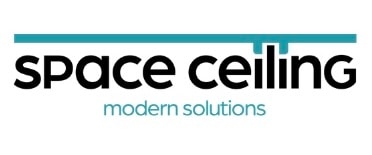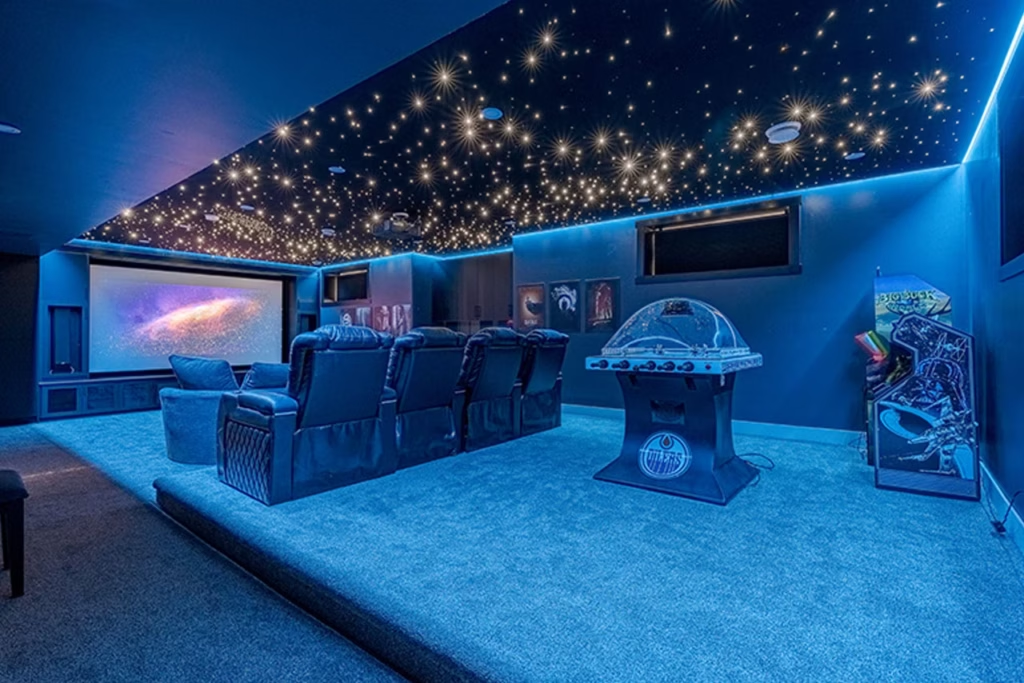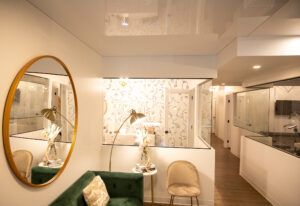

Why Choose Stretch Ceiling Installation?
Stretch ceilings offer a sleek, seamless look that hides imperfections and enhances lighting. The installation process is clean, efficient, and causes minimal disruption — ideal for residential upgrades or commercial renovations.
At Space Ceiling, we aim to make the installation process as smooth and hassle-free as possible.
Process
Stretch ceilings are a popular choice for enhancing the aesthetics of interior spaces. They are a type of suspended ceiling that consists of a fabric membrane stretched tautly across a framework to create a smooth, seamless surface. To install stretch ceilings, the installation process typically involves the following steps:
1. Measurements And Design
Our professional installer will visit your location to accurately measure the area where the stretch ceiling will be installed. They will also discuss your design preferences, colour choices, and any additional features you might want, such as lighting fixtures or decorative elements.
2. Preparation
We temporarily relocate or cover furniture, fixtures, and other obstacles to ensure a clean and unobstructed workspace, ensuring that any unsightly elements are effectively covered.
2.1 Preparing the Ceiling Structure
Before installing a tin ceiling, it’s essential to prepare the ceiling structure. Start by ensuring that the ceiling joists are securely attached to the walls and that the ceiling is level. Use a carpenter’s level to check for levelness and make any necessary adjustments. Inspect the ceiling for any obstructions, such as electrical wires or ductwork, and relocate them if needed.
Additionally, verify that the ceiling joists are spaced correctly. Typically, ceiling joists are spaced 16 inches on center, but this can vary based on the type of ceiling and local building codes. Use a stud finder to locate the ceiling joists and mark their positions on the wall. Proper preparation of the ceiling structure is crucial for a successful installation.
2.2 Choosing the Right Materials
Selecting the right materials for your tin ceiling installation is critical. Begin by choosing the appropriate type of tin ceiling panels, which come in various finishes, including powder-coated and bare steel. Ensure that the panels you select are durable and match your aesthetic preferences.
Next, choose a heavy-duty plywood underlayment to provide a stable base for the tin panels. Consider factors such as durability, maintenance, and aesthetics when selecting materials. Ensure that all materials are compatible with each other and with the ceiling structure to achieve a seamless installation.
3. Ceiling Grid Installation
A metal framework, known as a ceiling grid, is installed around the perimeter of the ceiling. This framework serves as a support structure for the stretch ceiling material. It is secured to the walls or ceiling using special brackets or profiles. The framework is carefully measured and levelled to ensure a precise fit.
3.1 Installing Ceiling Tiles
Installing ceiling tiles is a straightforward process that requires attention to detail. Start by measuring the ceiling’s length and width to determine the number of tiles needed. Use a chalk line to mark the ceiling’s center point, then snap a chalk line along the length of the ceiling to guide the installation of the first row of tiles.
For obstacles like light fixtures or electrical boxes, use a utility knife or a drill with a hole saw to cut the tiles to fit. Apply adhesive to the back of each tile and press it firmly into place, ensuring alignment with the chalk line. This method ensures a precise and clean installation of your ceiling tiles.
4. Heating, Stretching, and Hanger Wire
The stretch ceiling material, typically made of PVC or fabric, is factory pre-cut according to precise room measurements. The material is heated using a specialized heating device, which makes it pliable and stretchable. The heated material is then attached to the framework starting from one corner and gradually stretching across the ceiling until the fabric achieves the desired tension level and is smooth and wrinkle-free.
5. Finishing Touches and Ceiling Tiles
The excess material is trimmed away once the fabric is properly stretched. The edge is neatly finished and concealed using profiles or mouldings, providing a clean and polished appearance.
6. Optional Additions
Additional features like pot lights, recessed or backlit lighting fixtures, or decorative elements can be integrated into the stretch ceiling if desired.
7. Clean-Up And Inspection
Our installers will clean up the area after the installation, removing any debris or dust generated during the process. We will inspect the stretch ceiling for imperfections or issues, ensuring it is properly installed and meets safety and quality standards.
The installation process may vary depending on the specific type of stretch ceiling system used and the complexity of the interior.
Post-Installation Considerations
1. Troubleshooting Common Issues
After installing a tin ceiling, it’s essential to troubleshoot any common issues that may arise. One common issue is uneven ceiling tiles or panels. To fix this, use a level to check the ceiling’s levelness and make any necessary adjustments.
Another common issue is gaps between ceiling tiles or panels. To address this, use a utility knife or a drill with a hole saw to cut the tiles or panels to fit snugly together. Apply adhesive to the back of the tile or panel and press it firmly into place, ensuring alignment with the chalk line.
Regularly inspect the ceiling for any signs of damage or wear and tear. Address any issues promptly to ensure the longevity of the ceiling. This proactive approach will help maintain the ceiling’s appearance and functionality over time.
Acoustic Ceiling Solutions for Sound Control
We also offer acoustic ceiling solutions that improve sound quality in home theaters, studios, offices, and open-concept spaces. These ceilings absorb sound and reduce echo, combining beauty with functionality. Whether you want a printed acoustic ceiling or a soundproof stretch ceiling, our team has you covered.
You like to know more about acoustic Stretch Ceiling? Click here

Originally posted on December 9, 2024 @ 2:24 am



